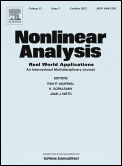
THEORY IN BIOSCIENCES
Scope & Guideline
Fostering Scholarly Communication for Global Impact
Introduction
Aims and Scopes
- Interdisciplinary Mathematical Modeling:
The journal emphasizes the use of mathematical models to analyze biological systems, including population dynamics, epidemiology, and evolutionary processes. This approach allows for the exploration of complex interactions within biological systems. - Philosophical and Theoretical Perspectives:
Articles often explore the philosophical underpinnings of biological concepts, such as individuality, evolution, and the nature of life. This focus helps to contextualize biological research within broader theoretical frameworks. - Bioinformatics and Computational Biology:
The incorporation of computational methods and bioinformatics tools to analyze biological data is a significant focus. This includes modeling genetic processes, metabolic networks, and ecological interactions. - Empirical and Experimental Integration:
The journal encourages studies that not only develop theoretical models but also validate these models with empirical data, fostering a reciprocal relationship between theory and practice. - Systems Biology:
There is a strong emphasis on systems biology, where researchers investigate the interactions and relationships within biological systems, applying both mathematical and empirical methods to understand complex biological processes.
Trending and Emerging
- Network Theory and Complex Systems:
There is an increasing focus on applying network theory to understand biological systems, including ecological networks and cellular interactions. This trend highlights the importance of connectivity and relationships in biological processes. - Eco-evolutionary Dynamics:
Research integrating ecological and evolutionary perspectives is gaining traction, reflecting a trend towards understanding how environmental changes influence evolutionary processes and population dynamics. - Mathematical Approaches to Health Sciences:
An emerging theme is the application of mathematical modeling in health-related research, particularly in understanding infectious diseases and cancer dynamics, indicating a growing intersection between theoretical biology and public health. - Data-Driven Biological Research:
The rise of bioinformatics and computational biology is evident, with a trend towards utilizing large datasets and computational tools to derive insights into biological questions, underscoring the importance of data in modern biological research. - Phenotypic Plasticity and Adaptation:
Increasing attention is being paid to phenotypic plasticity and its role in adaptation to changing environments, reflecting a broader interest in how organisms respond to ecological pressures.
Declining or Waning
- Historical Perspectives on Biology:
Although historical analyses of biological ideas have been a part of the journal's content, recent issues show a decrease in papers focusing on historical controversies and the evolution of biological theories, indicating a potential waning interest in these topics. - Teleological Explanations in Biology:
Papers exploring teleological concepts and their place in modern biology appear less frequently, suggesting a shift towards more mechanistic and reductionist approaches rather than discussions centered on purpose-driven explanations. - Philosophy of Biology:
While philosophical discussions are still present, there seems to be a decrease in articles focusing solely on philosophical critiques of biological concepts, as more emphasis is placed on empirical and mathematical modeling. - Case Studies in Evolutionary Biology:
The specific case studies exploring historical evolutionary mechanisms have become less frequent, indicating a possible decline in the journal's focus on detailed historical case analyses in favor of broader theoretical models.
Similar Journals

Mathematics in Applied Sciences and Engineering
Exploring new frontiers in applied mathematics and engineering.Mathematics in Applied Sciences and Engineering is a pioneering Open Access journal published by WESTERN LIBRARIES in Canada, dedicated to advancing the field of applied mathematics and its integration into engineering practices. With an E-ISSN of 2563-1926, this journal has been actively disseminating critical research since its inception in 2020, and aims to foster innovation and collaboration among researchers, professionals, and students alike. The journal excels in covering important topics within applied mathematics, modeling, and simulation, despite its current standing in the Q4 quartile for these categories according to the 2023 rankings, indicating significant opportunities for growth and contribution in these fields. Positioned in a competitive academic landscape—ranked #437 out of 635 in Applied Mathematics and #253 out of 324 in Modeling and Simulation—this outlet serves as an accessible platform for scholarly exchange, ensuring that emerging ideas and methodologies reach a broad audience while maintaining a commitment to academic integrity and quality.

Theoretical Biology Forum
Exploring Frontiers of Theoretical and Empirical ScienceTheoretical Biology Forum, a notable journal in the realms of agricultural and biological sciences, is published by FABRIZIO SERRA EDITORE in Italy. This journal, which has evolved alongside scientific discourse since its inception in 1949, provides a platform for innovative research and discussions that intersect theoretical concepts and empirical findings within biology. With an increasing impact, as reflected by its 2023 rankings in Q3 and Q4 quartiles, it strives to bridge gaps in knowledge and facilitate interdisciplinary exchange among researchers in general biological and agricultural sciences. In an age where open access is paramount, Theoretical Biology Forum supports the dissemination of new ideas and breakthroughs without barriers, enhancing accessibility for professionals and students alike. By contributing to this forum, scholars can engage with diverse perspectives and advance their understanding within this critical field.

JOURNAL OF MATHEMATICAL BIOLOGY
Where Mathematical Rigor Meets Biological Complexity.Journal of Mathematical Biology, published by Springer Heidelberg, is a leading international journal dedicated to the interdisciplinary field of mathematical modeling and its applications in biology. With an ISSN of 0303-6812 and an E-ISSN of 1432-1416, this journal has established its prominence within the academic community, reflected in its impressive rankings: Q1 in Agricultural and Biological Sciences (miscellaneous) and Q2 in both Applied Mathematics and Modeling and Simulation as of 2023. Covering a broad scope from ecological modeling to biomathematics, the journal serves as a crucial platform for researchers, professionals, and students alike to disseminate innovative work that bridges the gap between theoretical mathematics and biological phenomena. The journal, which spans from its inception in 1974 to 2024, emphasizes rigorous research while ensuring a high level of scholarly communication through its selective review process. With its solid reputation, the Journal of Mathematical Biology continues to significantly contribute to advancements in mathematical sciences and their essential role in understanding complex biological systems.

NONLINEAR ANALYSIS-REAL WORLD APPLICATIONS
Driving Discoveries in Nonlinear PhenomenaNONLINEAR ANALYSIS-REAL WORLD APPLICATIONS, published by PERGAMON-ELSEVIER SCIENCE LTD, is a premier academic journal dedicated to advancing the field of nonlinear analysis through rigorous research and practical applications. With an impressive impact factor and categorized in the Q1 quartile across multiple disciplines including applied mathematics, computational mathematics, and engineering, this journal stands as a vital resource for researchers, professionals, and students. Its extensive scope encompasses significant contributions from the domains of economics, medicine, and various engineering fields, making it a leading platform for interdisciplinary exchange. The journal's commitment to showcasing innovative methodologies and solutions from 2000 to 2025 not only enhances its academic prestige but also fosters real-world impact, thus catering to a diverse scholarly audience eager to explore the complexities and potentials of nonlinear phenomena. Access options vary, ensuring a wide dissemination of knowledge to drive future discoveries in this dynamic area of study.

CHAOS
Pioneering Research at the Intersection of ScienceCHAOS, an esteemed journal published by AIP Publishing, is a cornerstone of interdisciplinary research, focusing on the intricate dynamics of complex systems across various scientific domains. With a balanced impact factor, this journal emphasizes high-quality contributions in Applied Mathematics, Mathematical Physics, and Statistical and Nonlinear Physics, while also exploring intersections with Medicine and Physics and Astronomy. With rankings showing a remarkable percentile placement, notably #7 in Mathematical Physics and #10 in Statistical and Nonlinear Physics, CHAOS has established itself as a leading platform for disseminating groundbreaking research since its inception in 1991. This journal not only aims to foster collaboration among scientists but also to advance theoretical and computational frameworks that unravel the complexities of chaotic systems. Researchers, professionals, and students alike will find rich insights and innovative theories within its pages, making it an invaluable resource in the pursuit of knowledge and understanding in the modern scientific landscape.

SIAM JOURNAL ON APPLIED MATHEMATICS
Fostering Dialogue in the World of Applied MathematicsSIAM Journal on Applied Mathematics, published by SIAM Publications, is a leading academic journal that has been an essential resource for researchers and practitioners in the field of applied mathematics since its inception in 1969. With an impressive impact factor that places it in the Q1 category for Applied Mathematics and a respectable Scopus rank of #172 out of 635, this journal serves as a vital platform for sharing innovative research, methodologies, and applications that bridge theoretical mathematics and practical problems across diverse industries. Although the journal does not currently offer open access options, it remains a cornerstone of mathematical literature in the United States and worldwide, featuring rigorous peer-reviewed articles that address critical issues and advancements in the field. Researchers, professionals, and students are encouraged to engage with its rich repository of knowledge and contribute to the ongoing dialogue in applied mathematics, making it a must-subscribe journal for anyone invested in this dynamic discipline.

Journal of Bioinformatics and Computational Biology
Innovating Solutions for Complex Biological ChallengesThe Journal of Bioinformatics and Computational Biology, published by WORLD SCIENTIFIC PUBL CO PTE LTD, serves as a significant platform for disseminating innovative research in the dynamic fields of bioinformatics and computational biology. With an ISSN of 0219-7200 and an E-ISSN of 1757-6334, this journal facilitates the exchange of ideas and advancements from its inception in 2003 and continues to be pivotal through 2024. Despite its classification in the lower quartiles—Q4 in Biochemistry and Q4 in Molecular Biology, along with Q3 in Computer Science Applications—the journal remains a valuable resource for researchers and students alike, as it emphasizes interdisciplinary approaches essential for tackling complex biological problems through computational methods. Located in Singapore, the journal encourages submissions of high-quality, peer-reviewed articles that offer insights into computational techniques that empower biological research. Although this journal does not offer open access options, its contributions to research are increasingly recognized across various academic platforms. As the field evolves rapidly, this journal continues to attract a growing readership, making it an essential reference point for anyone interested in the intersection of biology and computer science.

CHAOS SOLITONS & FRACTALS
Advancing Knowledge in Nonlinear DynamicsCHAOS SOLITONS & FRACTALS, published by Pergamon-Elsevier Science Ltd, stands as a premier journal in the fields of mathematical physics, applied mathematics, and nonlinear dynamics. With an impressive impact factor and a 2023 ranking placing it in the Q1 quartile for both applied mathematics and mathematical physics, this journal serves as an essential platform for groundbreaking research and innovative theories that explore the complex interplay between chaos, solitons, and fractal structures. Established in 1991 and converging research until 2024, the journal features rigorous peer-reviewed articles that appeal to academics, professionals, and students alike, facilitating the dissemination of knowledge within a community passionate about statistical and nonlinear physics. Although not open access, its rich content is critical for those seeking to deepen their understanding and advance their work in these dynamic and multifaceted areas of study.

Bioinformatics Advances
Empowering Researchers with Cutting-edge Bioinformatics SolutionsBioinformatics Advances, published by Oxford University Press, is an esteemed academic journal that serves as a vital platform for the dissemination of innovative research in the rapidly evolving fields of bioinformatics and computational biology. With a promising E-ISSN of 2635-0041, this journal has made significant strides since its inception in 2021, achieving a commendable Q1 ranking in both the Computer Science Applications and Genetics categories, alongside respectable Q2 rankings in Molecular Biology and Structural Biology as of 2023. Though currently not an open-access publication, its critical insights cater to an audience keen on advancing knowledge and technology in genomic studies and data analytics. The journal emphasizes high-quality research and aims to facilitate the integration of computational techniques within biological sciences, making it an essential resource for researchers, professionals, and students alike who seek to stay at the forefront of bioinformatics advancements.

JOURNAL OF BIOLOGICAL SYSTEMS
Unveiling the complexities of biological systems through collaboration.Journal of Biological Systems is a prestigious journal published by World Scientific Publishing Co. Pte Ltd that serves as a vital platform for interdisciplinary research in the domains of agricultural and biological sciences, applied mathematics, and ecology. With its inception in 1996 and converging insightful contributions up to the present, the journal showcases innovative research that influences both theoretical and practical aspects within these critical fields. Its commendable Q2 category rankings in 2023 highlight its commitment to high-quality scholarship, achieving rankings of #62 in Agricultural and Biological Sciences, #243 in Applied Mathematics, and #204 in Ecology on the respected Scopus index. While the journal maintains a traditional publishing model, its rigorous peer-review process ensures that it meets the highest academic standards. The Journal of Biological Systems is essential reading for researchers, professionals, and students keen to keep abreast of the latest developments and methodologies impacting ecological systems, mathematical applications, and biological innovations.